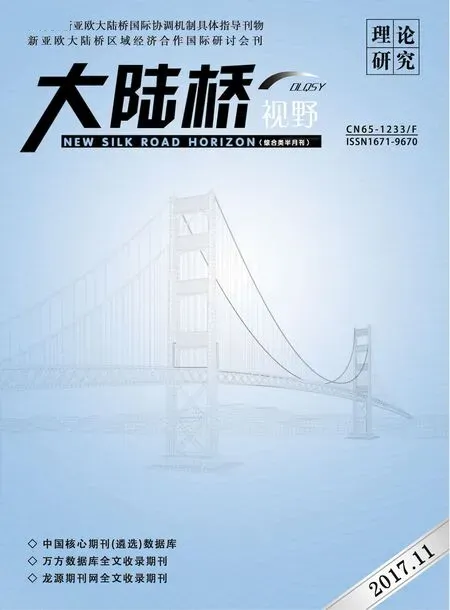Agenda Setting in International Communication
劉麗妍/魯迅美術(shù)學(xué)院基礎(chǔ)教學(xué)部外語(yǔ)教研室
Agenda Setting in International Communication
劉麗妍/魯迅美術(shù)學(xué)院基礎(chǔ)教學(xué)部外語(yǔ)教研室
淺談在國(guó)際傳播中的議程設(shè)置
International Communication plays an important role in our society.Agenda setting theory emerges from communications studies and focuses on mass media influence on setting political agenda.The theory explains the correlation between the rate at which media cover a story and the extent that people think that this story is important.The media has become a strong barrier of communication between families and the outside world.
agenda setting,international communication
Mass communication is defined in “Mass Media,Mass Culture”as the process whereby professional communicators use technological devices to share messages over great distances to influence large audiences.In a narrow sense,international communication mainly focuses on news reporting activities carried out by the communicator aiming at foreign countries out of a certain purpose,with its target audience being foreign governments,organizations and public.It is also called international news report or foreign communication.Within this process the media,which can be a newspaper,a book and television,takes control of the information we see or hear.
The destination of international communication is to influence the international audience and change their original attitude toward and the viewpoint of the source nation.
While the development of high technology has greatly promoted the mass media,and the news agencies become even more important when more and more communication activities are carried out by news media in our daily life.Information globalization is one of the main characteristics in today’s world,which pushes forward a series of globalizations of politics,economy,culture,environment,and even fashion.
The agenda setting theory is the theory that the mass media have a large influence on audiences by their choice of what stories to consider newsworthy and how much prominence and space to give them.The theory explains the correlation between the rate at which media cover a story and the extent that people think that this story is important.This correlation has been shown to occur repeatedly.
1.Functions of Agenda Setting in mass media:
The agenda setting function has multiple components: Media agenda are issues discussed in the media,such as newspapers,television,and radio.Public agenda are issues discussed and personally relevant to members of the public.Policy agenda are issues that policy makers consider important,such as legislators.Corporate agenda are issues that big business and corporations consider important,including corporations.These four agendas are interrelated.The two basic assumptions underlie most research on agenda setting are that the press and the media do not reflect reality,they filter and shape it,and the media concentration on a few issues and subjects leads the public to perceive those issues as more important than other issues.
2.Levels of agenda setting
The first-level agenda setting is most traditionally studied by researchers.In this level the media use objects or issues to influence the public.In this level the media suggest what the public should think about.In second-level agenda setting,the media focuses on the characteristics of the objects or issues.In this level the media suggest how the people should think about the issue.There are two types of attributes: cognitive(subtantative,or topics) and affective (evaluative,or positive,negative,neutral).Intermedia agenda setting involves salience transfer among the media.Usage The theory is used in political advertising,political campaigns and debates,business news and corporate reputation,business influence on federal policy,legal systems,trials,role of groups,audience control,public opinion,and public relations.
3.Strengths and of theory:
It has explanatory power because it explains why most people prioritize the same issues as important.It also has predictive power because it predicts that if people are exposed to the same media,they will feel the same issues are important.It can be proven false.If people aren’t exposed to the same media,they won’t feel the same issues are important.
People may not be well-informed,deeply engaged in public affairs,thoughtful and skeptical.Instead,they may pay only casual and intermittent attention to public affairs and remain ignorant of the details.For people who have made up their minds,the effect is weakened.News media cannot create or conceal problems,they may only alter the awareness,priorities and salience people attached to a set of problems.Research has largely been inconclusive in establishing a causal relationship between public salience and media coverage.
4.Conclusions
Nations and governments often look at International Communication as an instrument for propagating romantic “national images” of their people,culture,politics and economics.An understanding of media agenda setting is a necessary prerequisite to comprehending how the mass media agenda influences the public agenda.The public agenda,once set by,or reflected by,the media agenda,influences the policy agenda,of elite decision makers,and,in some cases,policy implementation.The media agenda seems to have a direct,sometimes strong,influence upon the policy agenda of elite decision makers,and in some cases,policy implementation.
Bibliography:
[1]Wilson,James R.,and Roy S.Wilson.Mass Media,Mass Culture,Fifth Edition.Boston.Mc Graw Hill,2001.
[2]Brooks,Brian S.,et.al.“News Reporting and Writing”.Seventh Edition.Bedford / Missouri Group.Page 27
[3]Arthur Hoffman,international Commawication and the New Diplomacy (Bloomington: Indiana University Press,1968),p.22.
[4]Richard Dimbleby and Graeme Button,More Than Words: An Introduction to Communication (New York: Routledge,1998),p.7.

